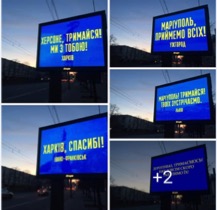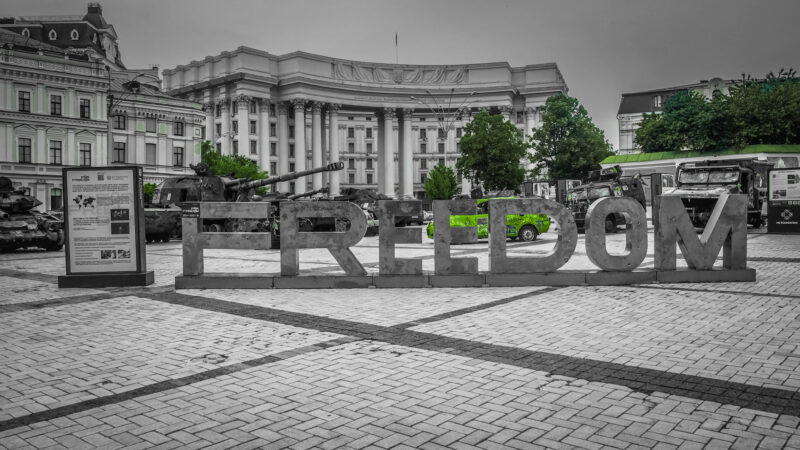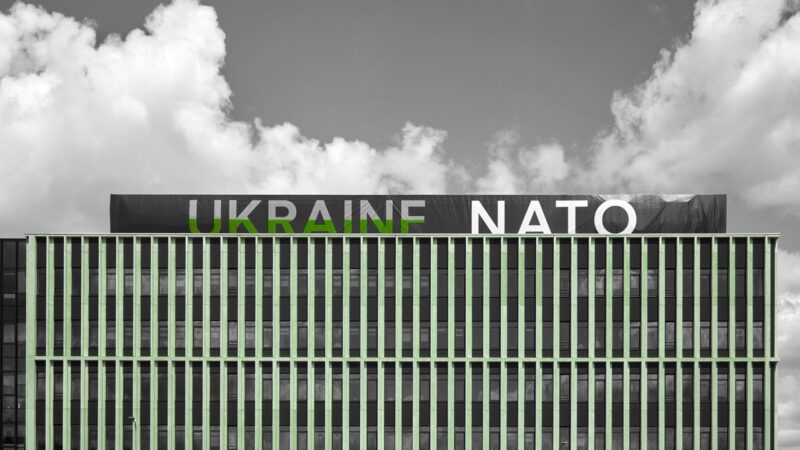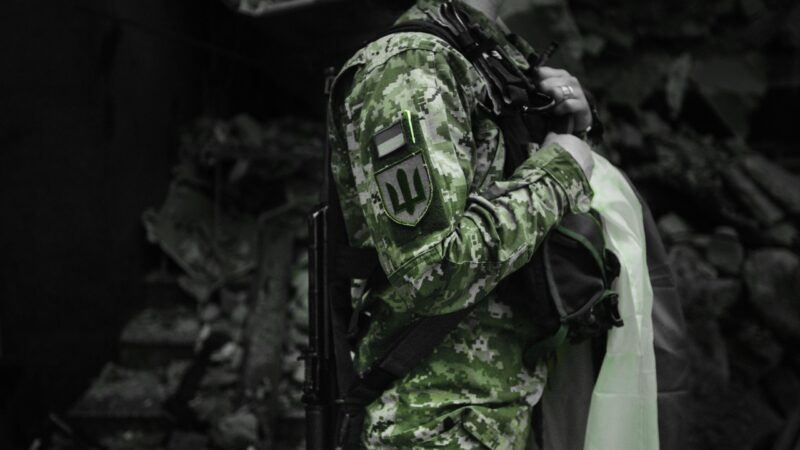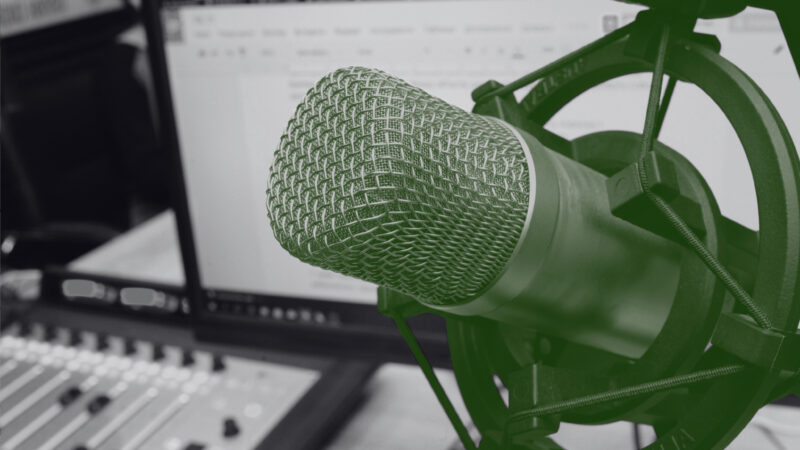Ukrainian Society Under Conditions of War: A Strong Force of Social Cohesion
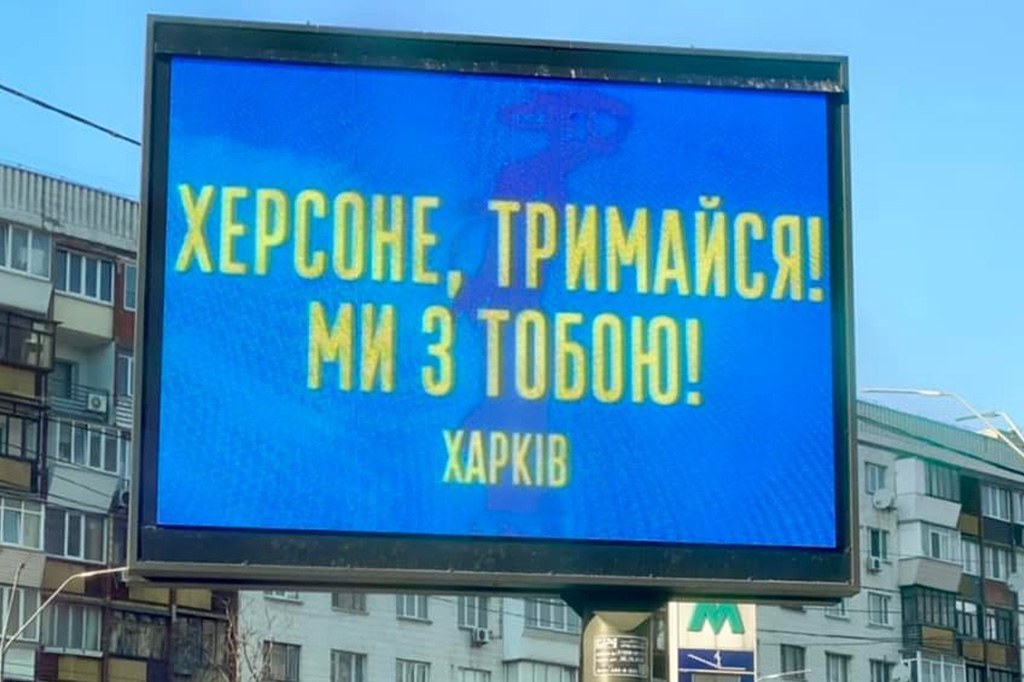
War radically influences a society, transforming the workings of social institutions and changing social relationships. Under military conditions, each sphere of life becomes reoriented toward meeting survival needs. This priority focus influences adherence to values and previously established patterns of behavior, enhancing some social bonds and making others less sustainable. What dramatic changes did Ukrainian society undergo during the first month of war?[1]
The start of Russia’s escalated war actions in Ukraine prompted an unprecedented strengthening of social cohesion in the country suffering invasion and destruction. A rather blurred and debatable concept, social cohesion is commonly defined as the “social glue that holds a society together” [1]. The base of this glue is formed by actors’ social cooperation and by resilient social relationships, supported by positive emotional connectedness between its members, with a pronounced focus on the common good [2]. According to previous sociological studies [3], Ukraine had never been considered as a strongly cohesive society. Active reforms of the Ukrainian state that were started after the Euromaidan or “Revolution of Dignity” in 2013–14 affected social cohesion in a variety of ways. Our own recent research identified positive effects of the decentralization reforms with respect to strengthening social cohesion in Ukraine, while the language reforms had an opposite effect [4]. Before the war Ukrainians’ scores on social cohesion indices were mixed—for example, showing low trust in state institutions but simultaneously a strong sense of belonging both at the local community level and in the country as a whole.
Mechanisms for strengthening social cohesion can generally be based on a number of theoretical models. The most famous is the common enemy image, proposed by G. Simmel [5]. From the beginning of Russia’s military invasion, all of Ukraine’s ethnic, political, cultural, and religious divisions have been downplayed as the people have united against a common evil (as opposite to a common good) in defence of their nation.
Volunteering as an occupation during the war
Volunteering and donations are often included among several indicators for the empirical measurement of social cohesion [6]. From the first days of the escalated Russian war against Ukraine, volunteering has continuously increased. According to a poll conducted by the Rating Sociological Group on 8–9 March 2022, over 80% of respondents replied that they are helping to defend Ukraine in different ways: 39% help other people and the army as volunteers, 37% provide financial support, 18% participate in information resistance, 12% continue to work in critical infrastructure, and 10% participate in the grassroots organized territorial defense forces. Only 19% of the respondents said they were not in a position to help the country; they were for the most part older people. However, even among seniors a majority are involved in resistance activities. By comparison, before the war the total number of volunteers among Ukrainians was up to 20% (poll of the Democratic Initiatives Foundation and the Razumkov Center for 19–25 December 2018). The war has stimulated both quantitative and qualitative specifics of volunteering. From the qualitative angle, volunteering has become more profound in that activities that usually took place during people’s free time have now replaced their professional practices:[2]
“In fact, I am a store owner. But with the start of the war, I took my van, which I used to transport food, and began to transport people to the border. At first I drove for free, but the money ran out, so I take it from people who can afford to pay in order to buy petrol and continue to drive.”—Vadym, 43 years old, Lviv.
“From the first days of the war, we converted the conference hall of our centre into a temporary accommodation for Ukrainians coming from the eastern regions of Ukraine. People arrive every day, and their number is growing.”—Natalia, 31 years old, Lviv.
A lot of Ukrainian business, professional, cultural, sports, and civil society groups reoriented their activity to civilian and army needs under the conditions of war. Famous Ukrainian sportsmen, singers, businesspeople, and ordinary citizens are actively donating to the Ukrainian army and organizing humanitarian aid for vulnerable groups.
For most people, volunteering has also become a means of healing war trauma:
“When you can do something and not just sit inside four walls all day and sсroll the news, then you don’t pay as much attention to sirens and time. You are then fulfilling a job that you probably wouldn’t be doing in peacetime. You connect people with each other, sort all manner of donated things, and make hundreds of calls. You do anything you can. And it distracts you from sad thoughts.”—Yevhen, 45 years old, father of two children, Kharkiv.
Resistance as a united practice
As survey data collected during the war have shown, a new common practice of resistance has appeared for all Ukrainians. This practice is being realized in different ways. In terms of social cohesion, the resistance has come to be the practice of achieving a common good: victory. Each sphere of professional activity has become resistance-oriented and politically determined. Ukrainian bloggers and influencers who previously declared themselves as being “out of politics” have changed this stance to one of resistance and have become political actors. Resistance practices under the conditions of war have taken a central position in nation-building processes, putting ethnic, regional, cultural, and other traits in the background. A new aspect of Ukrainian identity has appeared: being Ukrainian means mounting a resistance.
“Now we are all one big family, in which everyone supports each other”: A new quality of social bonds and networks
During the Covid-19 pandemic restrictions, social actors were increasingly experiencing “digital isolation” due to the loss of proximal coexistence in physical time and space and the weakening of bonding social capital, which made the usual models of identification less stable and fixed. Now, however, Ukrainian society in conditions of war is demonstrating new trends in this regard and prompting a fresh look at Putnam’s theory of social capital. People have become socially closer to one another, regardless of which communities are they attached to. They all are taking care of relatives, neighbours, colleagues, and even strangers who are in need of help. The intensity and quality of Ukrainian social capital have been multiplied by the practices of widespread volunteering and charitable assistance. Transformations of bonding and bridging types of social capital have occurred. Previously relevant areas of bridging social capital (vertical and weak ties, thin trust, structural holes etc.) have been transformed into bonding social capital (horizontal and strong ties, thick trust, network closures etc). Such patterns of behavior have been demonstrated by representatives of almost all the political parties, who have united their forces to reach a single common goal (victory), supporting and empowering each other from the first day of the war. This behaviour strategy has found support among Ukrainians. According to the “Rating” survey results on 01 March, President Zelensky of Ukraine has an absolute level of support of 93%. Overall, the key factor of Ukraine’s unprecedented national unity is total support of the Ukrainian armed forces and a strong faith in Ukraine’s victory.
At the regional level, a bright empirical illustration is demonstrated by the mayor of Kharkiv, Ihor Terekhov, who in one of his interviews described Kharkiv citizens as being one big family. This demonstrates how previous bridging social capital between local authorities and citizens has been transformed into a bonding one, with strong ties, thick trust, and network closure. Each day the mayor spends a lot of time with Kharkiv citizens inside the underground bomb shelters, monitoring all processes and supporting a triumphant spirit. His popularity among Kharkiv inhabitants has correspondingly risen markedly. The same trend of bonding social capital is observed among other groups and communities throughout Ukraine—professional, religious, ethnic, local, and so on.
Here’s another way that bonding social capital is formed under wartime conditions between people previously unknown to each other:
“Serhiy picked us up in his car and drove to the border for free. He immediately responded as soon as I wrote to him through volunteer networks. Along the way, he tried to encourage me and the children, even tried to joke. He helped with the suitcases, advised us where to go. We exchanged telephone numbers and kept in touch. I will definitely invite him to Kharkiv after the victory and accept him as a member of my family.”—Olena, 42 years old, mother of two children, Kharkiv.
Tightly connected with the new quality of social capital in Ukraine is the erasure of intergroup cleavages. In social cohesion studies this is seen as a key indicator of social cohesion strengthening [6]. The war has erased a lot of diversities and established the foundation for new unities among Ukrainians. This is especially relevant for the previously tangible gap between rich and poor people and the equalizing effects of the war. From the beginning of war actions, people started to actively share their own financial savings in order to support the Ukrainian army, relatives, friends, and vulnerable people. Very prominent in this case is the story of an 83-year-old Ukrainian pensioner from Bukovyna who sent all his life savings (10,000 US dollars and 100,000 hryvnias) to support the Ukrainian army. People donated their cars for military purposes and opened their houses and apartments for those in need. With the launch of the war a “helping industry” in terms of social capital appeared in Ukraine, demonstrating a transition from the pre-war “exchange regime,” primarily based on financial relationships and bilateral input, to a “gifting regime,” relevant for wartime and based on willingness to help and unilateral input. Donations, humanitarian aid, and free evacuation and other types of services (e.g., medical and legal consultations) could be identified as indicators of such a “gifting regime.”
“Kherson, hang tight! We are with you! – Kharkiv”: A new quality of regional cooperation
War actions occurring in different regions of Ukraine have made Ukrainians more horizontally bonded. Social advertisements have appeared in public throughout all Ukrainian cities, demonstrating a positive emotional connectedness between west and east, north and south.
The social actors on these boards are Ukrainian cities which have to varying degrees been damaged during more than 20 days of war and are now addressing warm words and greetings of support, respect, and care to one another (“Kherson, hang tight! We are with you!”—Kharkiv; “Mariupol, we will host everyone!”—Uzhhorod; “Kharkiv, thank you!”—Ivano-Frankivsk; “Mariupol, hang tight! We will welcome your citizens!”—Lviv). Such social advertising shows the force of emotional connectedness between different regions of Ukraine, something which is strongly enhancing interregional social cohesion. The previously much-debated discourse of “two Ukraines,” emphasizing sociocultural differences between western and eastern parts of Ukraine, has again shown its weakness. Nowadays we are seeing the formation of a politically, civically, psychologically, and culturally united nation, with ethnic differences being downplayed. Regardless of your ethnic background you are now a Ukrainian who’s defending your native land from the enemy’s invasion.
#StandWithUkraine
Another perspective that is worth mentioning is the unprecedented social solidarity and worldwide support to Ukraine from the international community. This has substantially strengthened Ukraine’s external social cohesion and its social capital and inclusion at an international level. Financial, humanitarian, and military donations, multiple civic protests around the world, open borders for Ukrainian refugees, and collective protection for them have driven Ukraine and Ukrainians closer to the EU and the community of European states than ever before. Ukrainian passport has come to be a symbol of real democracy and unswerving freedom. It is extremely important to maintain this worldwide support for Ukraine and maintain pressure for sanctions against Russia; this also has important implications for strengthening the social cohesiveness of Ukrainian society. A nation built on cohesion and resistance will always win over one that builds a “fake” unity on blood and lies.
Literature
- Bernard, P. (1999). Social cohesion: A dialectical critique of a quasi-concept. Lien social et Politiques, 41, 47–59.
- Dragolov, G., Z. Ignacz, J. Lorenz, J. Delhey, K. Boehnke, and K. Unzicker. Social Cohesion in the Western World: What Holds Societies Together: Insights from the Social Cohesion Radar (Heidelberg: Springer, 2016).
- Бондаренко, М., Бабенко, С., Боровський, О. (2017). Соціальна згуртованість в Україні (досвід аплікації методики Bertelsmann Stiftung до даних Європейського соціального дослідження). Вісник Київського національного університету імені Тараса Шевченка, 8, 58–65.
- Aadne Aasland, Oleksandra Deineko, Olga Filippova, and Sabine Kropp. Citizens’ perspectives: Reform and social cohesion in Ukraine’s border regions. In The Accommodation of Regional and Ethno-cultural Diversity in Ukraine, edited by Aasland Aadne and Kropp Sabine, 237–72 (Palgrave Macmillan, 2021).
- Simmel, Georg. Der Raum und die räumlichen Ordnungen der Gesellschaft. In Soziologie – Untersuchungen über die Formen der Vergesellschaftung, 460–526 (Berlin: Duncker & Humboldt).
- Chan, J., H.P. To, and E. Chan. Reconsidering Social Cohesion: Developing a Definition and Analytical Framework for Empirical Research, Social Indicators Research 75, no. 2 (2016): 273–302.
[1] This analysis examines the stated problem in the context of the recent escalated invasion of the Russian Federation in Ukraine, which is termed simply “the war” notwithstanding and without prejudice to the fact that the present Russo-Ukrainian War actually began in 2014 with the illegal annexation of Crimea and occupation of the Donbas region of eastern Ukraine (Donetsk and Luhansk oblasts).
[2] The quotes below were collected by Deineko during the first days of the war in Kharkiv, as well as from notes taken during conversations with various people during her evacuation from Kharkiv westward across Ukraine.
